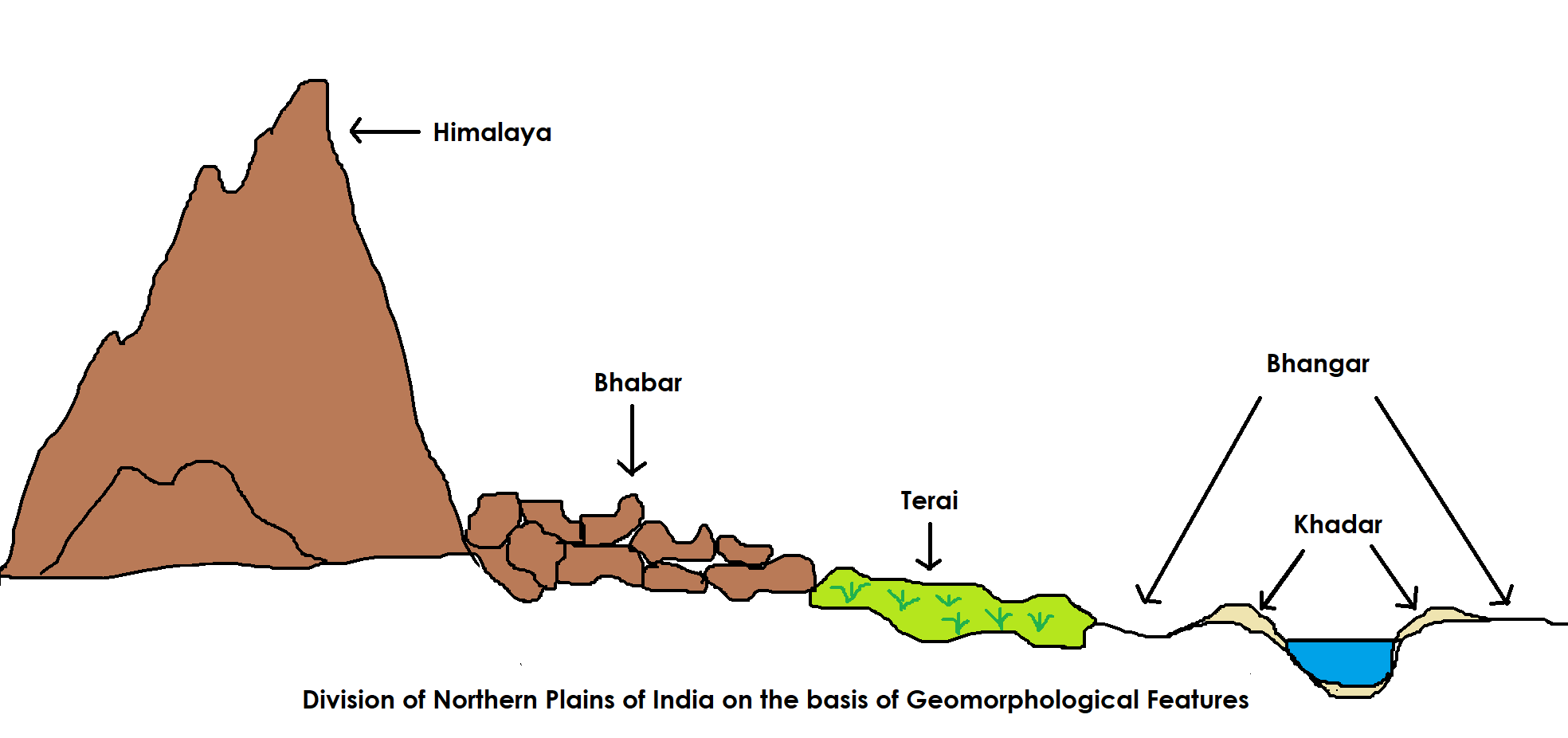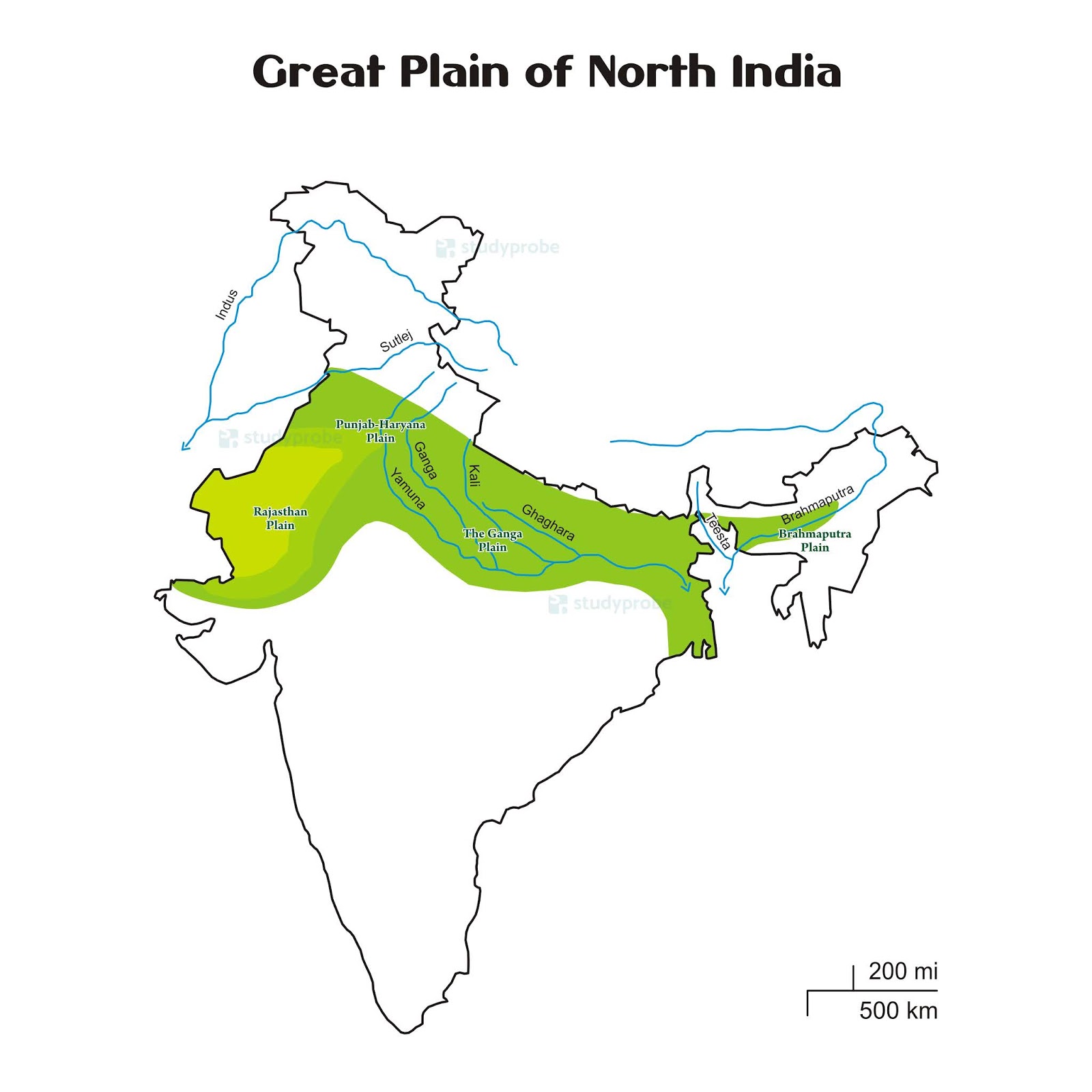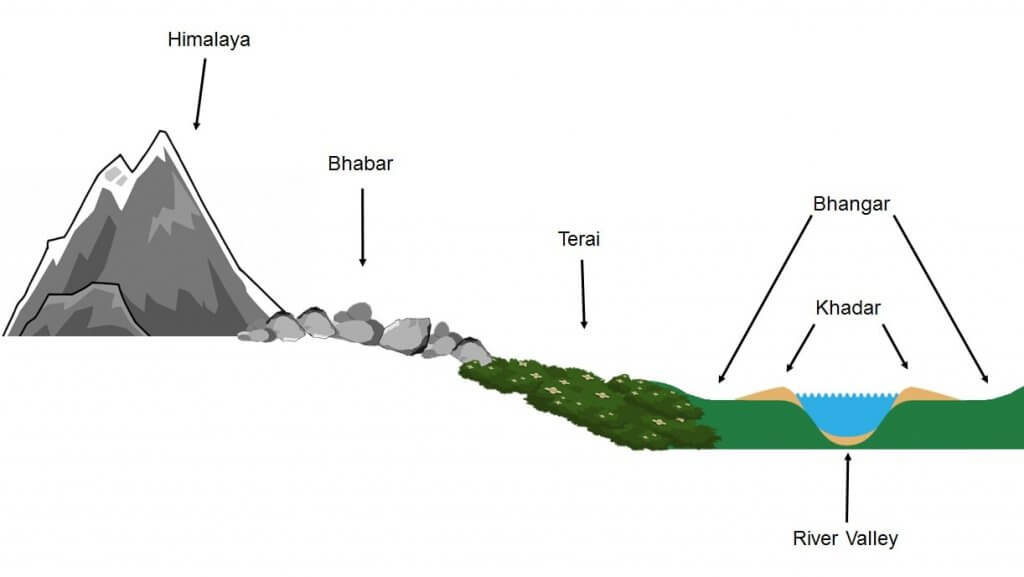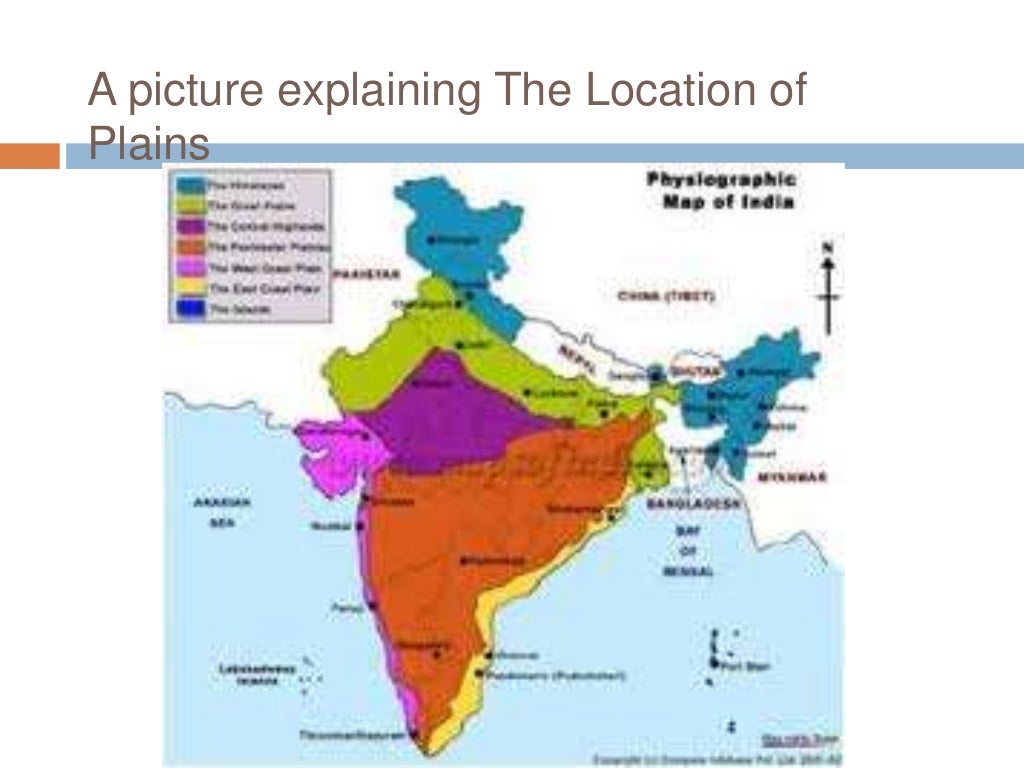
North Indian Plains
The Great North Indian plains are homogeneous surfaces with an invisible slope. These are alluvial fertile plains formed by the deposition process of the Himalayan Rivers. Along with the Himalayan Rivers, the Vindhyan Rivers are also having a prominent role in making the land fertile. It deposits a large number of sediments along the foothills The Great North Indian plain is.

[Short Notes] Northern Plains of India Indo Gangetic Plains Division UPSC
Northern Plains of India Importance, Features, Maps And States Madhavi Gaur September 05, 2023 12:02 2277 0 Blogs The Northern Plains of India are made by the mud and sand carried by rivers like Indus, Ganga, and Brahmaputra. If you want to know more about the Northern Plains of India, check out this article. Table of Contents

Coastline of India Coastal Plains of India PMF IAS UPSC Coastal plain, Ap human geography
1 Comment The northern plains have been formed by the interplay of the three major river systems, namely the Indus, the Ganga, and the Brahmaputra along with their tributaries. This plain spreads over an area of 7 lakh sq. km. The plain being about 2400 Km long and 240 to 320 Km broad, is a densely populated physiographic division.

Give an account of the Northern Plains of India? CBSE Class Notes Online Classnotes123
The North Indian Plain. Formed by depositional work of Rivers viz. Indus, Ganga & Brahamputra; 2400 km long & varying in width from 240 to approx. 320 km.

Indian Physiography Northern Plains of India Indo Gangetic Plain
The great plains of northern India, also known as Ganga-Satlej Plains, are, in fact, transitional belt between the Himalayas and Peninsular India. The great plains cover an area 7,74,000 km 2 (3,00,000 square miles) having west-east length of 2400 km and north- south width of 144 km. Except Aravallis in the Rajas than plains no part of these.

Physical Features of India Class 9th Notes Leverage Edu
North India is a well-defined region of the northern part of India. The Indus-Gangetic Plain and the Himalayas are the important geographical features of this region and delimitate it from.
Northern Plains of India video Dailymotion
The rivers in the plains are navigable, allowing for easy transportation and thus promoting trade and commerce. The flatness of the land also allows for easy access to communication facilities. If you would like to contribute notes or other learning material, please submit them using the button below.

North Indian Plain YouTube
Plains of Northern India, also known as the Gangetic Plains, is situated in the southern Himalayan Region. The Northern Plains spreading from Assam to Punjab has a length of around 2400 km and the width ranges between 150 km to 300 km, varying in different regions. It can be found in Bihar, Punjab, Assam, West Bengal, Uttar Pradesh, parts of.

सिन्धु गंगा के मैदान सिन्धुगंगाब्रह्मपुत्र (Indo Gangetic Plains IndoGangeticBrahmaputra)
Northern plains are the youngest physiographic feature in India. They lie to the south of the Shivaliks, separated by the Himalayan Frontal Fault (HFF). The southern boundary is a wavy irregular line along the northern edge of the Peninsular India. On the eastern side, the plains are bordered by the Purvanchal hills. The Northern Plains | Part 1

Geography Map Marking by Neetu Singh
A significant physical division of India, the Great North Indian Plains plays a pivotal role in Indian geography and competitive exams like UPSC, IAS etc. Featuring as one of the most fertile landmasses on the Indian territory, these plains are suitable for farming, cultivation, crop production, and other agricultural activities.

show the northern mountain and northern plains on india physical map Brainly.in
North India, also called Northern India or simply the North, is a loosely defined region consisting of the northern part of India. The dominant geographical features of North India are the Indo-Gangetic Plain and the Himalayas, which demarcate the region from the Tibetan Plateau and Central Asia.

Mapsofindia Blog India's No. 1 Mapping Site Page 17
Northern plains of India or Indo-Gangetic plains form the second largest physiological division of India with an approximate area of 21 percent of the total geographic area of India. The Ganga, Indus and Brahmaputra flow through these plains and provide plenty of water for irrigation.

Learn about Indian Plains. Memorize the division of Indian plains using visualization. in 2020
North Indian Plain - Simple English Wikipedia, the free encyclopedia North Indian Plain The North Gangetic Plains of India, Bangladesh and Nepal. The Ganges River is in the middle of the plains.

Indo Gangetic Plains IndoGangeticBrahmaputra
1. Alluviation Of The Foredeep 2. In Filling Of The Rift Valley 3. Remnant Of Tethys Sea 4. Recent views Formation of Indo - Gangetic Brahmaputra Plain Formation of Indo gangetic Brahmaputra trough Depositional activity New rivers and more alluvium Features of Indo Gangetic Brahmaputra Plain Geomorphological Features of Northern Plains of India

Plains of India
Coordinates: 27.25°N 80.5°E Indo-Gangetic Plain Clusters of yellow lights on the Indo-Gangetic Plain reveal numerous cities large and small in this photograph of northern India and northern Pakistan, seen from the northwest. The orange line is the India-Pakistan border.

Geographical Significance Of The Great North Indian Plains
Indo-Gangetic Plain, extensive north-central section of the Indian subcontinent, stretching westward from (and including) the combined delta of the Brahmaputra and Ganges (Ganga) rivers to the Indus River valley. The region contains the subcontinent's richest and most densely populated areas.